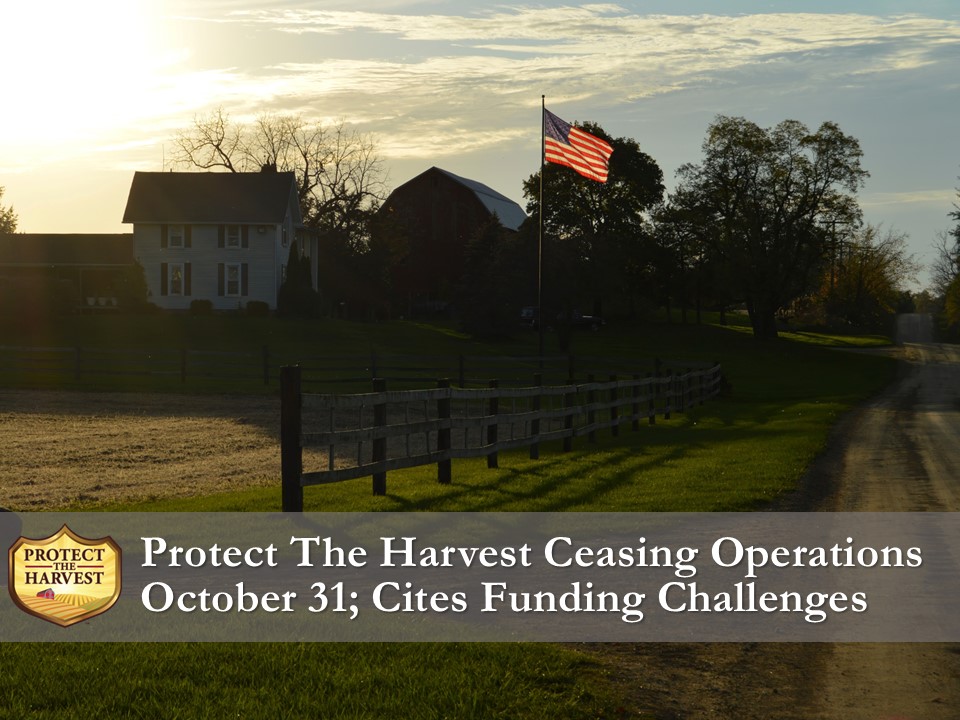By Jaclyn De Candio for Protect The Harvest
Federally Funded Big Solar: The Bureau of Land Management (BLM) recently announced a draft proposal and update to the Western Solar Plan that puts a target on federal lands traditionally utilized for public grazing. The plan details solar energy development that could make 22 million acres eligible for utility-scale projects.
This is a theme that is becoming increasingly common and controversial in rural and agricultural regions in numerous states. Unfortunately, this push is aggressive as the infatuation with “renewable energy” sources – even at the expense of food production –— continues to increase among a variety of stakeholders, especially unelected bureaucrats in Washington, D.C.
“The proposal is an update of BLM’s 2012 Western Solar Plan, which identified areas in Arizona, California, Colorado, Nevada, New Mexico, and Utah with high solar potential and low resource conflicts in order to guide responsible solar development and provide certainty to developers,” reads a recent BLM press release. However, the updates don’t end there. BLM expanded the territory to include five additional states: Idaho, Montana, Oregon, Washington, and Wyoming. According to a Wyoming News article, the state is currently earmarked as a top-10 state for solar energy potential.
Federal Government Burns Taxpayer Dollars to Federally Funded Big Solar
The Biden administration’s fixation on renewable energy, coupled with looming 2035 deadlines, has created a challenging conflict between public land use and solar energy. President Biden’s “Investing in America” agenda is burning taxpayer dollars at an alarming rate as it strives to expedite the “clean energy and transmission build-out to lower consumers’ energy costs, prevent power outages in the face of extreme weather, create good-paying union jobs, tackle the climate crisis, advance the priorities of clean air and environmental justice for all.” The administration’s push aligns with the ambitious goal of accelerating clean energy adoption at all costs while addressing the urgent need for environmental sustainability and social justice.
BLM touts the administration’s goal of a 100% “clean” electricity grid by supporting 47 related projects. Wyoming is one state that is especially attractive for solar energy as it is currently ranked 43rd nationally with less than 1 percent of energy sourced from solar and has lots of flat, open land to accommodate solar arrays.
BLM’s allocation of $4.3 million from the Inflation Reduction Act is driving the Western Solar Plan. These funds are expediting the solar development application process, ensuring flexibility to accommodate technological changes.
A Threat to Food Security
Once again, the pursuit of renewable electric energy in the name of “sustainability” threatens food security. In the case of Wyoming, it competes with valuable rangeland that supports the state’s livestock industry, which contributes more than 75 percent of the state’s agriculture economic output according to the University of Wyoming.
The federal government’s thirst for solar energy development goes well beyond Wyoming, with massive amounts of farmland and rangeland acreage required to meet the administration’s aggressive renewable energy goals. According to one analysis from the National Renewable Energy Lab, 700,000 acres of public land permitted for solar will be required to reach the lofty “net zero” goals set by the federal government over the next 20 years.
No Safety Net for Grazing Rights
Currently, the BLM plan discounts the needs of farmers and ranchers and ignores the need for national food security. Instead, what’s included is Alternative 3, which would prevent “transmission infrastructure sprawl” while also “protecting high-value resources, thus reducing habitat fragmentation, natural resource disturbance and environmental and cultural resource impacts.”
The exclusionary criteria would take into consideration wildlife, presence of congressionally designated Wild and Scenic rivers or Scenic or Historic trails, along with sites of cultural significance to Native American tribes. This is an important detail to note, as it illustrates the plan only considers the big picture while ignoring state and local needs, including food production and fair access to public lands.
There is Still Time to Act
According to the BLM, “Public input will inform a Final Programmatic Environmental Impact Statement and Record of Decision. The public can submit written comments through April 18, 2024. More details are available on BLM’s Solar Program website.”
There are alternative solutions for solar energy development that don’t involve developing public lands, such as utilizing rooftops and abandoned city structures.
BLM will conduct open-house meetings, both virtual and in-person, to inform the public of its plans and efforts to support renewable energy development on our nation’s public lands.
In the interest of A Free and Fed America™, please consider getting involved and having your voice heard on this important topic.



